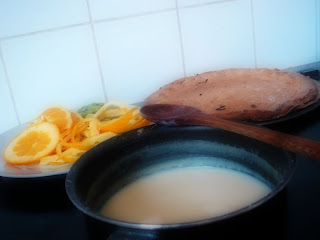We are all used to see celebrity chefs on
the tv nowadays. They probably spend more time in front of the cameras than in
their kitchen. However it is not something totally new.
In the 18th century, in Italy
there was somebody already keen in becoming a celebrity chef. Pellegrino Artusi was his name. This
year, a century after his death, its masterpieces in the kitchen and in its
books are still around and considered more than ever the real bases of the Italian
culinary traditions.
A bit of history to introduce the star of
the show..
Pellegrino Artusi was born in Forlimpopoli on 4th August 1820, the only male son
among seven sisters. His father, Agostino was a wealthy businessman dealing
with colonial items.
After his studies at the Bertinoro’s Seminary, he started
dealing with his father business as well as cultivating his passion for
literature and cooking,
His masterpiece, “La scienza in cucina e l’
arte di mangiar bene” (The kitchen science and the art of well eating) is still
considered a mile stone of the family culinary tradition in Italy and abroad. It
collects 790 receipts, from broth to liqueurs, passing through soups, hors-d’
ouvres (or well “starters”), second dishes and cakes. The approach is a
didactic one (“with the practical manual – Artusi writes – it’ s sufficient to
be able to keep a ladle in the hands”). The receipts are followed by the
author’ s reflections and anecdotes, as he writes in a witty style.
It is a real pleasure to read the book,
which is available in English as well. It has cultural insights, which help the
reader understand where much of the Italian culinary tradition come from.
Artusi is not just a book or a name; it
became in the years a brand, which have been used to promote gastronomic tourism
in the Artusi’s region, Emilia Romagna, already strong in the food and beverage
field.
Furthermore, a wide range of culinary
events and cooking classes are organized by CASARTUSI, which is “the centre
of gastronomic culture dedicated to Italian home cooking”. CASARTUSI involves a library, dedicated to
the “celebrity chef”, a restaurant, where receipts are inspired by the above-mentioned
book, and a cooking school. Everything under one name : Artusi, which with is
scientific approach to cooking, and without the use of tv and social media have
been surviving for a century and will last for ever.
If you
want to find out more visit: http://www.pellegrinoartusi.it/ .














